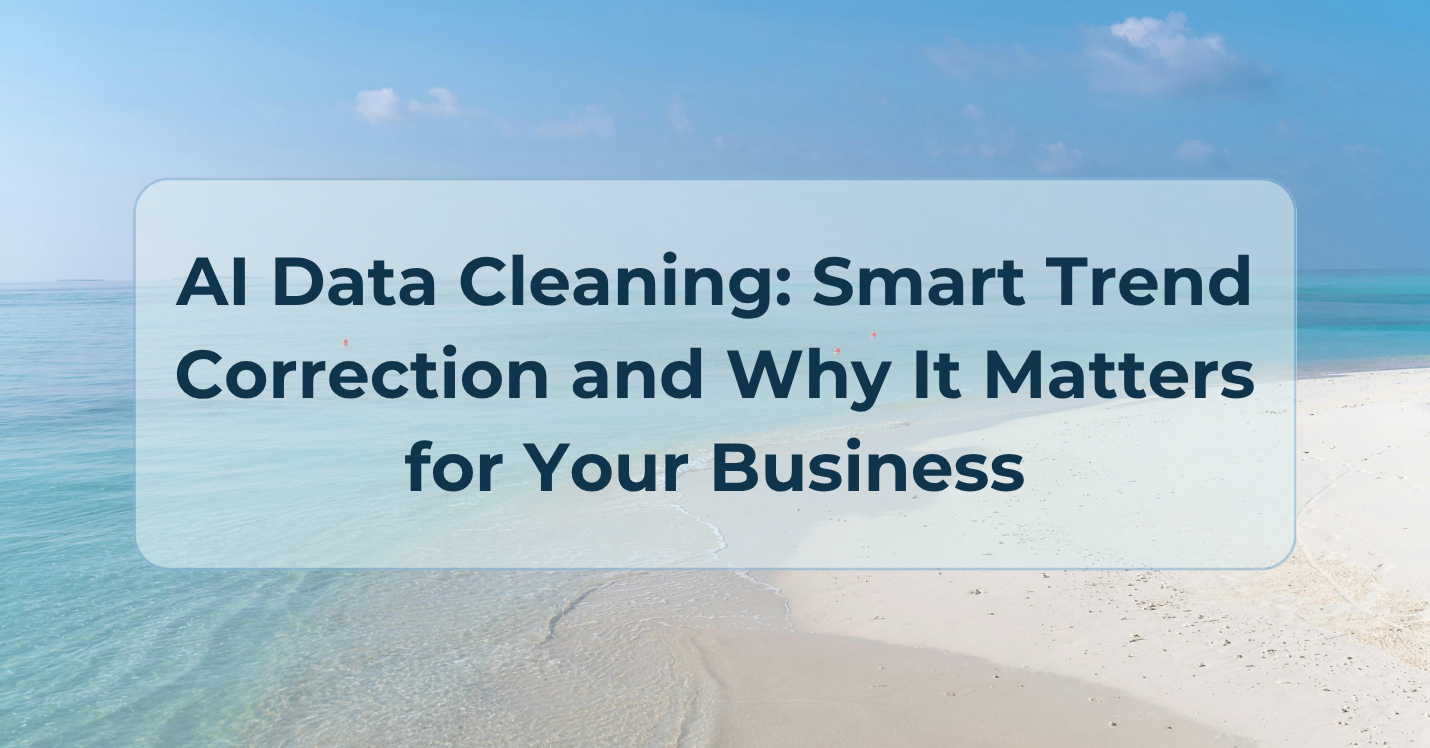Available in other languages:
Español | Français | Deutsch
Introduction
In today’s business landscape, data fuels decisions. Companies invest heavily in analytics platforms, BI tools, and machine learning models. However, they often overlook a critical issue: data quality.
Even advanced AI systems cannot produce valuable insights with dirty data. This is where AI data cleaning becomes essential. It helps eliminate errors, correct trends, and maintain trust in the decision-making process.
According to IBM (2020), more than 30% of business data contains errors or outdated information. Gartner (2021) reports that poor-quality data costs companies an average of $12.9 million each year. In Europe, this figure reaches $15 million per company annually. These losses include poor decisions, missed opportunities, and inefficient processes.
As a result, demand for AI-based data solutions is rising. The European AI data management market is projected to hit $28.38 billion by 2030, growing at 22.3% annually. This growth highlights the urgent need for reliable, scalable data-cleaning systems.
Key idea: The quality of your data defines the accuracy of your business decisions. AI data cleaning ensures that quality.
Traditional Data Cleaning Methods
Limitations of Manual Rules
Before AI, companies used manual processes and fixed rules to clean data. These traditional methods have clear downsides.
First, they are time-consuming. Cleaning large datasets can take days or even weeks. For example, correcting input errors across millions of records requires extensive human effort.
Second, traditional methods are rigid. Rules like “field must contain 10 digits” or “must match predefined format” fail in complex cases. They cannot catch subtle patterns or errors that depend on context.
Third, they lack adaptability. These static systems don’t learn from new data. If trends change, the rules remain outdated.
As a result, outdated tools can miss key problems. AI data cleaning, by contrast, adapts and scales as the data evolves.
How AI Improves Data Cleaning and Trend Correction
AI doesn’t just automate; it understands. AI data cleaning uses advanced models to fix errors, spot outliers, and clarify trends. These models adapt to the context, making them far more effective than static rule-based methods.
Detecting Anomalies
AI can identify outliers and irregularities. Unlike basic filters, it examines patterns over time. For instance, time-series models like Prophet or ARIMA detect spikes or drops that deviate from normal seasonal trends.
Clustering algorithms (e.g., DBSCAN or K-Means) group similar data points. Outliers appear as items outside these groups. Neural networks can also learn standard patterns and flag any deviation.
Correcting Inaccuracies
AI can compare data fields and detect inconsistencies. For example, if a city name doesn’t match the postal code, AI flags it. It also catches currency mismatches and logical errors in customer profiles.
Using Natural Language Processing (NLP), AI tools correct typos, remove duplicates, and standardise labels. As a result, datasets become cleaner and more consistent.
Clarifying True Trends
Time-series data often includes noise. Seasonal effects, marketing campaigns, or rare events can distort long-term trends. AI helps smooth the data and highlight what matters.
For example, sales might drop 20% in one region due to local floods. AI identifies this external cause and adjusts the forecast accordingly. This leads to more accurate projections and better planning. If you want to explore AI further, we recommend reading this article: “Predicting Recession: Crowd Wisdom vs. Artificial Intelligence“.
Case Studies: AI Data Cleaning in Action
Retail: Smoothing Sales Trends
A large retailer faced erratic sales data. Promotions, holidays, and weather disrupted the numbers. Forecasting became unreliable.
With AI data cleaning, the company used models like Prophet and XGBoost. These tools removed outliers and detected real trends. As a result, forecast accuracy improved by 28%, and excess inventory fell by 17% (Deloitte, 2022).
Manufacturing: Cleaning Sensor Data
A factory relied on IoT sensors to monitor machines. However, the raw data was noisy. Temperature shifts and vibrations skewed the readings.
AI models processed this data using neural networks and filtering techniques. The result? Downtime decreased by 35%, and maintenance costs dropped by 20% (McKinsey, 2021).
Finance: Spotting Fraud Faster
A bank needed to detect fraud in real time. Traditional systems raised too many false alarms. This overwhelmed analysts and delayed response times.
AI data cleaning systems filtered standard behaviour patterns and highlighted true anomalies. The false-positive rate dropped by 30%, while fraud detection improved by 47% (KPMG, 2023).
Why Clean Data Drives Performance
Business Value and ROI
Clean data leads to better results. AI data cleaning improves forecasting, customer experience, and resource planning.
Companies that manage their data well can boost revenue by up to 20% (PwC, 2023). They also avoid costly mistakes and improve operational efficiency.
Adoption is increasing. As of 2024, 13.48% of European firms use AI tools. Among large enterprises, this number jumps to 41.17%. This trend shows that clean, AI-enhanced data is becoming standard in competitive industries.
Growth of the AI Data Market
Why Adoption Is Accelerating
The need for more innovative data tools is skyrocketing. As noted, Europe’s AI data management market may reach $28.38 billion by 2030. What’s driving this growth?
- Efficiency demands: AI saves time and improves accuracy.
- Regulations: Laws like GDPR require better data governance.
- Technology readiness: More firms now use cloud platforms and machine learning tools.
AI data cleaning plays a significant role in this shift. It supports compliance, enables agility, and strengthens decision-making.
Our expert guidance in business forecasting will help you identify and mitigate threats and transform external challenges into strategic opportunities. [Contact Us]
Conclusion: AI Data Cleaning Is a Strategic Priority
Data is more than numbers—it’s your business foundation. Without clean data, forecasts, insights, and decisions fail. AI data cleaning solves this by removing noise and correcting trends.
Consulting firms can help implement AI cleaning tools. They audit existing systems, build custom workflows, and train staff.
Clean data improves speed, accuracy, and resilience. Investing in AI data cleaning means investing in your company’s future.





